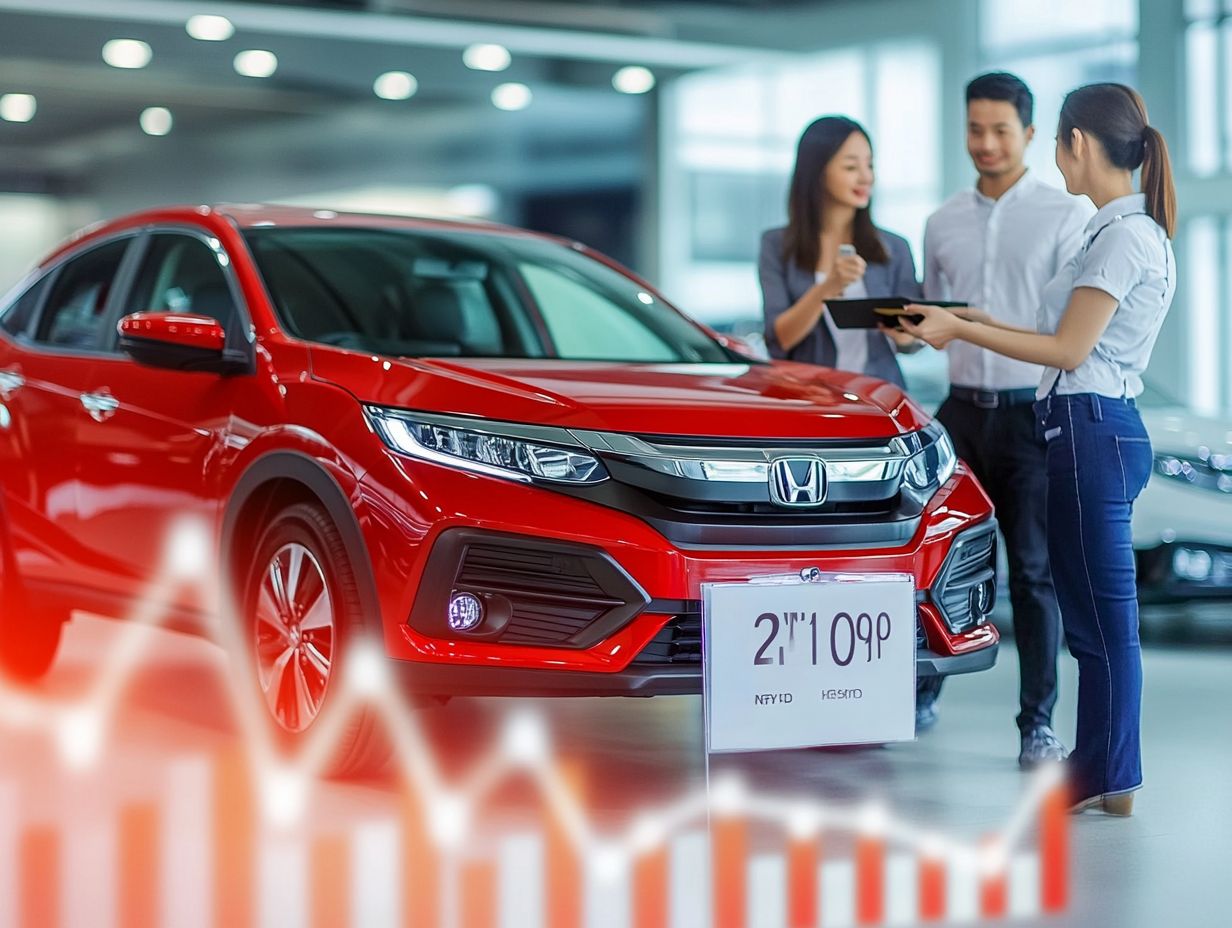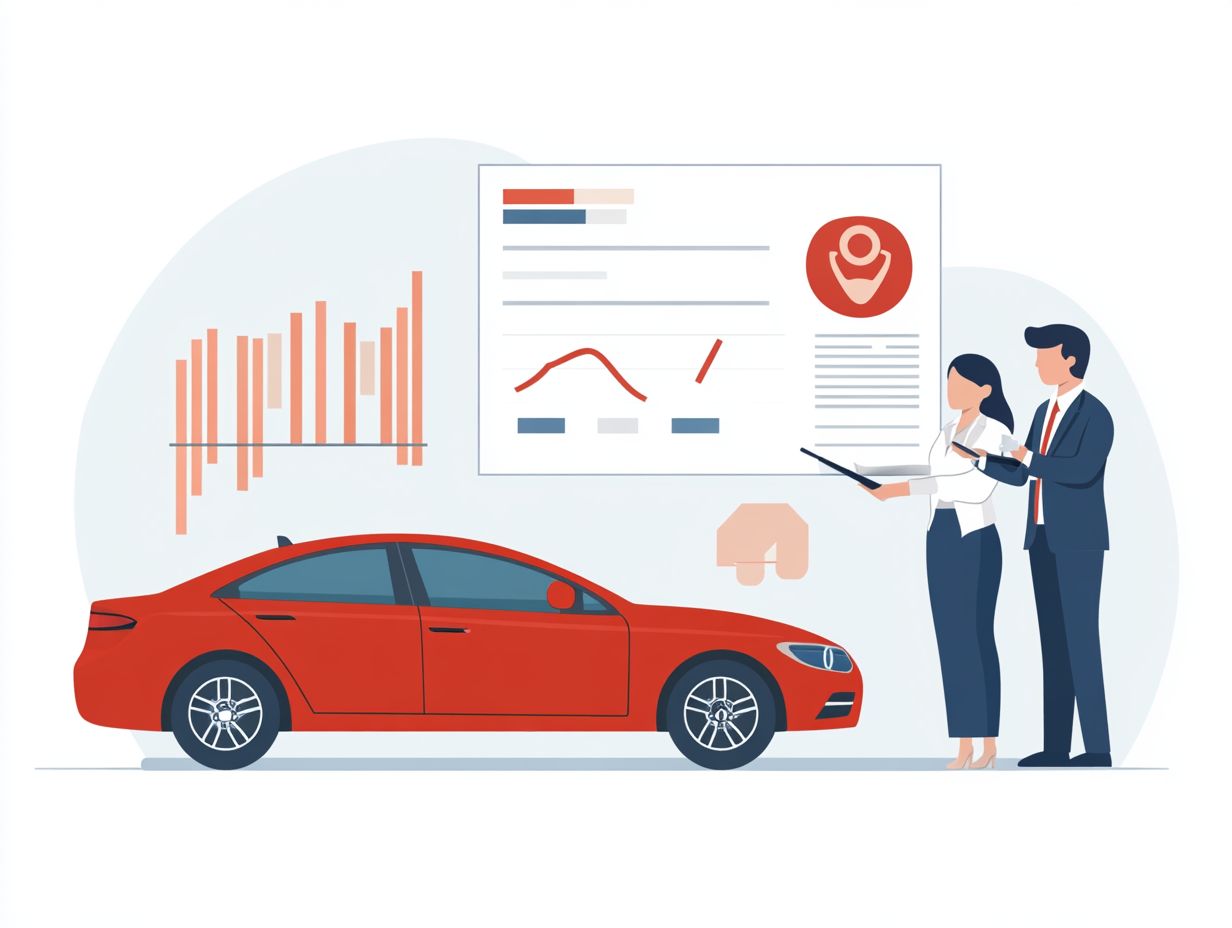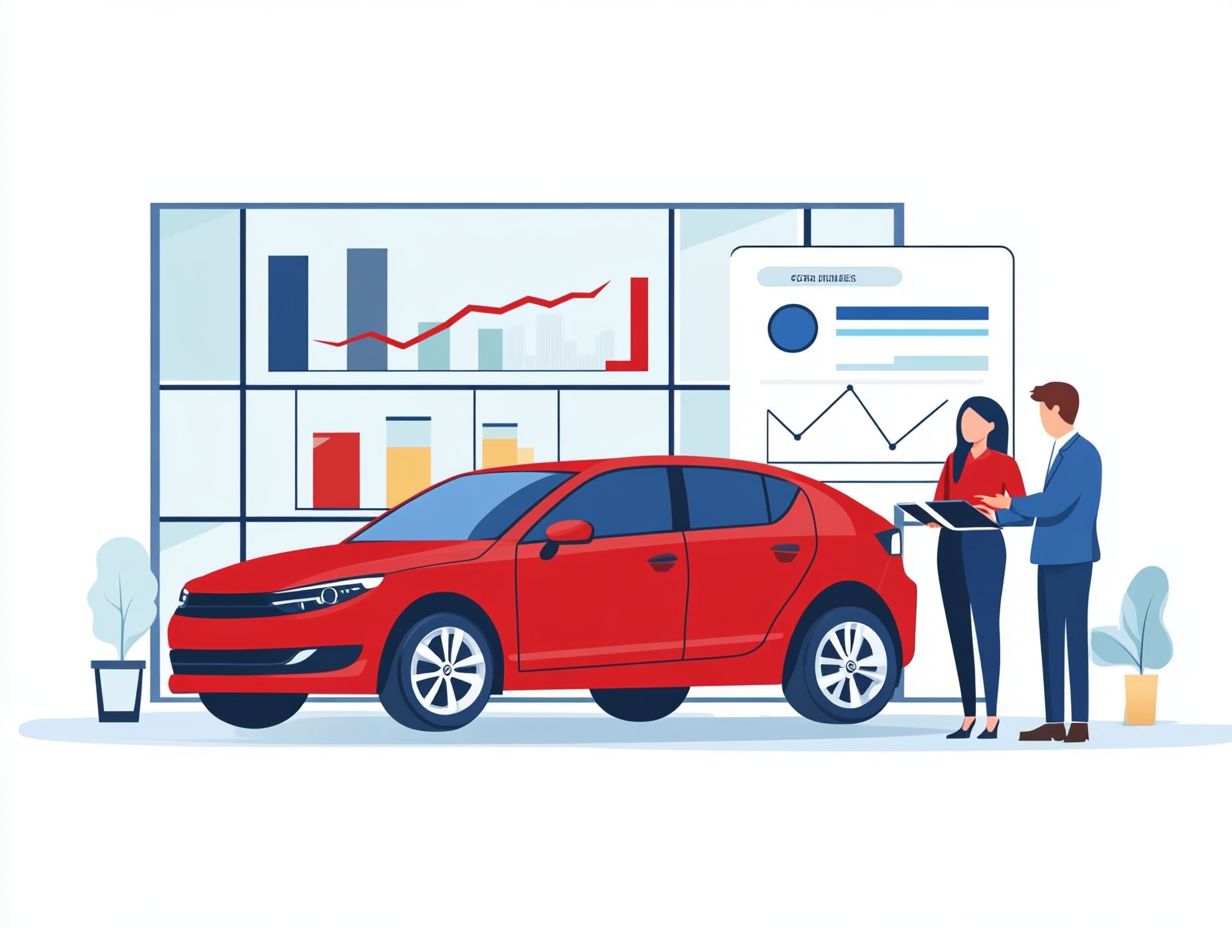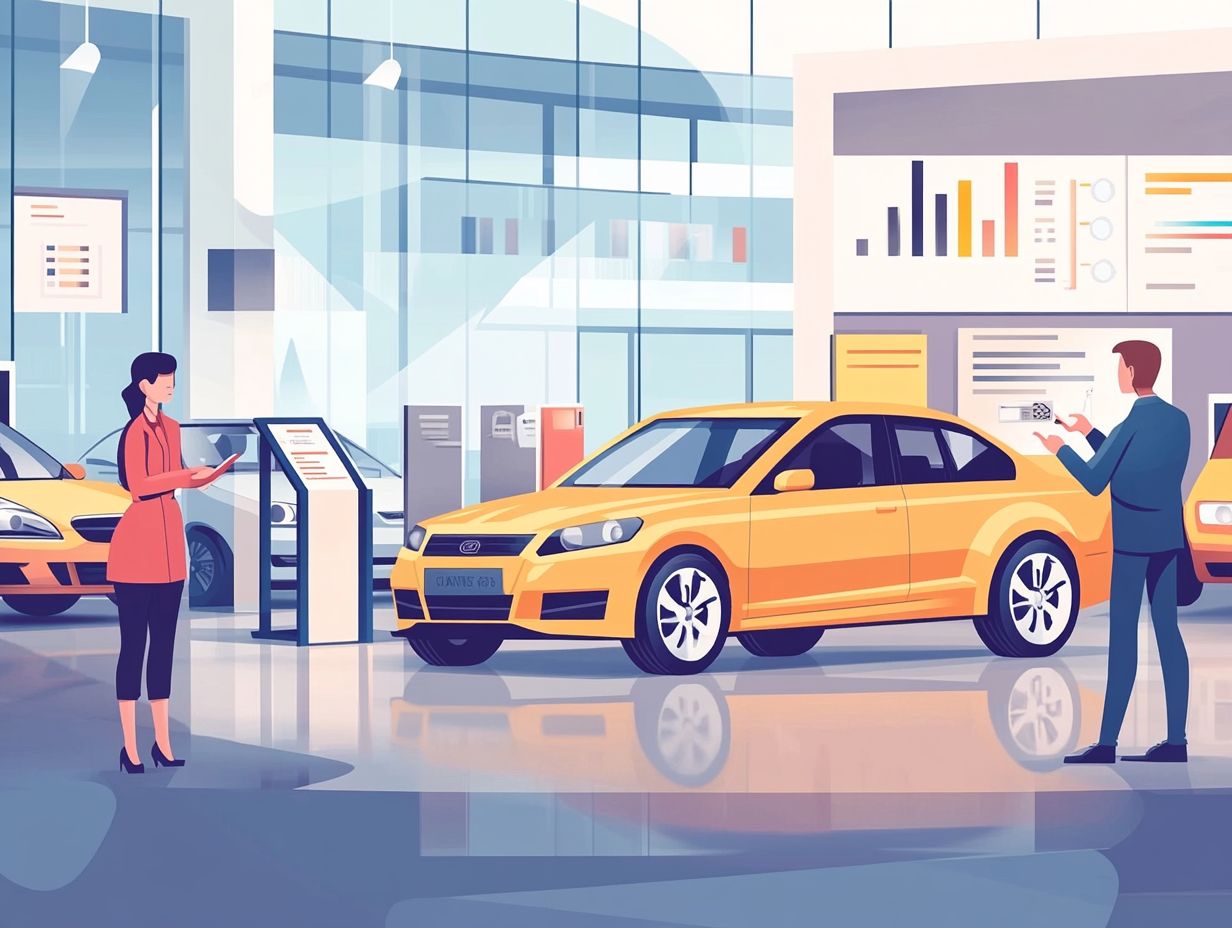The Impact of Interest Rates on New Car Loans
Navigating the world of car loans can feel like stepping into a labyrinth, particularly when it comes to understanding interest rates. These rates are important in determining not just your monthly payment but also the overall cost of your vehicle.
This guide breaks down everything you need to know about interest rates! It meticulously examines the various types of interest rates, delves into the factors that influence them, and provides you with invaluable tips to secure the best possible rate.
This guide also examines alternatives to traditional loans, discussing emerging trends that could shape your financing options in the future.
Whether you re a first-time buyer or considering refinancing, this information will equip you with the insights necessary to make informed and confident decisions.
Contents
- Key Takeaways:
- Understanding Interest Rates
- How Interest Rates Affect New Car Loans
- Tips for Getting the Best Interest Rate
- Alternatives to Traditional Car Loans
- Future Predictions for Interest Rates and Car Loans
- Frequently Asked Questions
- What is the impact of interest rates on new car loans?
- How do interest rates affect the affordability of a new car loan?
- Why do interest rates on new car loans fluctuate?
- What is the average interest rate for a new car loan?
- What is the difference between fixed and variable interest rates on new car loans?
- How can I get a lower interest rate on a new car loan?
Key Takeaways:

- It is important to understand the different types of interest rates and how they can impact new car loans.
- Interest rates are influenced by factors such as credit score, loan term (the length of time you have to pay off the loan), and economic conditions, affecting monthly payments and the total cost of a car loan.
- To secure the best interest rate, improve your credit score and negotiate with lenders. Consider alternative financing options like leasing or buying.
Understanding Interest Rates
Understanding interest rates is essential for consumers making financial decisions, especially in the automotive sector, where vehicle prices are significantly impacted by the rates established by the Federal Reserve.
These interest rates dictate the borrowing costs for auto loans, influencing your monthly payments, down payments, and the overall cost of financing both new and used cars.
As inflation and various economic factors shift, interest rates do as well. This creates a substantial impact on the affordability challenges many borrowers encounter today.
Definition and Types of Interest Rates
Interest rates are typically divided into fixed and variable rates, each designed to meet different borrower needs when it comes to auto loans and financing options.
With fixed interest rates, you enjoy the stability of consistent monthly payments throughout the life of the loan, making budgeting and long-term planning easier. In contrast, variable interest rates can change based on market conditions. They might offer lower initial payments, but be cautious if rates rise, your costs could increase significantly over time.
When evaluating auto loans, the length of the loan term plays a crucial role in determining the total financing cost. Shorter terms lead to higher monthly payments, but result in less overall interest paid. In contrast, longer terms can alleviate immediate financial strain but may lead to higher expenses in the long run.
How Interest Rates Affect New Car Loans
Interest rates significantly influence the affordability of new car loans. They affect crucial financial elements such as monthly payments and the total cost for those pursuing auto financing.
Understanding this relationship gives you the power to make informed decisions and navigate the complexities of securing the best possible loan for your needs.
Factors that Influence Interest Rates

Several economic factors, including actions taken by the Federal Reserve, inflation rates, and prevailing market conditions, play a significant role in shaping the interest rates on auto loans.
When the Federal Reserve makes adjustments to its benchmark interest rate, it sets off a chain reaction that ultimately impacts you, the borrower. Elevated benchmark rates typically lead to increased costs for banks, which often pass those expenses along to you as higher rates on loans, including your vehicle financing.
Inflation is another key player in this game. As prices rise, lenders increase interest rates to cover costs. Additionally, factors such as employment rates, economic growth trends, and consumer demand contribute to the fluctuating landscape of auto loan interest rates.
Impact on Monthly Payments and Total Cost
The interest rate plays a pivotal role in shaping both your monthly payments and the overall cost of a car loan. This makes it an essential factor to consider as a potential borrower.
For instance, if you decide on a $20,000 car loan with a three-year term, you will see striking differences in your monthly obligations depending on the interest rate. If the rate is 3%, your monthly payment would be around $582, leading to a total interest cost of about $1,000 by the end of the loan. However, if the interest rate increases to 6%, your monthly payment climbs to approximately $608, resulting in a total interest payment of $1,900.
This example underscores how varying rates can impact not only the affordability of your monthly payments but also the overall expense incurred by the conclusion of the loan term.
Tips for Getting the Best Interest Rate
To secure the best interest rate on your auto loan, explore effective strategies. Focus on enhancing your credit score, obtaining loan preapproval, and diligently comparing offers from various lenders.
These steps can significantly influence the terms you receive, ultimately saving you money.
Improving Credit Score and Negotiating with Lenders
Improving your credit score is crucial for negotiating better terms with lenders for auto financing. This can potentially save you thousands over the life of your loan.
This process impacts not only your initial approval but also plays a vital role in the interest rates you receive, influencing your overall financial health. Review your credit reports to pinpoint areas for improvement, such as making timely payments and addressing outstanding debts.
Maintaining consistent communication with lenders can lead to more favorable repayment plans. By taking a proactive approach, you enhance your chances of securing loans with reduced interest rates and less burdensome terms, maximizing your investment in a new vehicle.
Alternatives to Traditional Car Loans
When contemplating the purchase of a vehicle, it s wise to explore alternatives to traditional car loans. Options like leasing, financing used vehicles, and electric cars can offer you greater affordability and flexibility, allowing you to make a choice that best suits your financial landscape.
Leasing vs. Buying and Financing Options
The choice between leasing and buying a vehicle requires weighing benefits such as lower payment obligations against factors like total cost and ownership.
Leasing offers the enticing opportunity to drive a new model every few years without the long-term commitment of purchasing. This option appeals particularly to those who enjoy keeping up with the latest features and innovations.
However, while your monthly payments for leasing may be lower, the total cost over time could surpass that of buying outright especially when you factor in potential mileage limits and wear-and-tear fees.
On the other hand, buyers enjoy the advantage of full ownership, leading to greater equity in the long run. Equity refers to the ownership value of your car. Yet, this route typically demands a larger upfront investment and higher monthly payments. Understanding these nuances is essential for anyone navigating the intricate decisions within the automotive market.
Future Predictions for Interest Rates and Car Loans
Future predictions for interest rates and car loans depend on various economic factors and the Federal Reserve s policies. These elements will significantly shape the options available to you as a borrower in the years ahead.
Economic Factors and Potential Changes
Stay ahead of the game! Understanding economic factors, like inflation rates and Federal Reserve decisions, gives you the power to anticipate potential changes in interest rates. These changes can affect the automotive industry significantly.
When the economy fluctuates, interest rates can change. Higher interest rates usually mean more expensive borrowing for consumers, which can reduce demand for new vehicles. Conversely, when the Federal Reserve lowers rates, it encourages borrowing and spending, stimulating auto sales.
Economic conditions, such as employment levels and consumer confidence, also play a key role. They determine how interest rate changes impact purchasing behavior in the automotive market. By staying informed, you can navigate these dynamics with strategic insight.
Frequently Asked Questions

What is the impact of interest rates on new car loans?
Interest rates significantly affect your loan cost and monthly payments. Higher rates mean you pay more overall, while lower rates help you save.
How do interest rates affect the affordability of a new car loan?
Interest rates directly affect the affordability of a new car loan, determining the amount charged on the loan. Higher interest rates can make a new car loan less affordable, while lower rates can make it more accessible.
Why do interest rates on new car loans fluctuate?
Interest rates on new car loans fluctuate due to various factors, including changes in the economy, inflation rates, and the Federal Reserve’s money management strategies. Lenders also consider the borrower’s credit score and the type of car being purchased when determining the interest rate.
What is the average interest rate for a new car loan?
The average interest rate for a new car loan varies based on current market conditions and the borrower’s creditworthiness. As of 2021, it averages around 4-5%, but individual factors can cause it to be lower or higher.
What is the difference between fixed and variable interest rates on new car loans?
Fixed interest rates on new car loans remain constant throughout the loan term, while variable rates can change based on market conditions. Fixed rates offer stability and predictable payments, while variable rates can save money if rates decrease but may increase payments if rates rise.
How can I get a lower interest rate on a new car loan?
To secure a lower interest rate on a new car loan, you can improve your credit score, shop around and compare offers from different lenders, make a larger down payment, or consider a shorter loan term. It’s also advisable to negotiate with lenders for a lower rate if you have a good credit history and can demonstrate your repayment ability.
Stay updated on interest rates to make the best choices for your next vehicle purchase!







